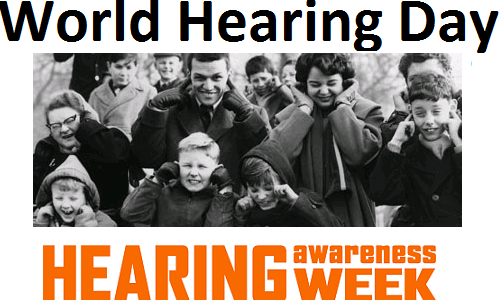Visit www.worldhearingday.org.au or www.hearingawarenessweek.org.au.
with the financial support of Hearing Australia. 
Take the Hear&Now 2020 Challenge.
On WORLD HEARING DAY 3 March 2020 we identify the areas that need big improvements to make the community accessible for people with hearing difficulties and who communicate in sign language.
- Healthcare appointments with poor hearing access
When it is difficult or impossible to adequately hear and follow what is being said by medical or support staff.
This may be because staff lack awareness of hearing and deafness or are not skilled in speaking clearly.
It may also because useful equipment like visual patient calling systems and hearing loops are not available, or that required language or communication support, such as Auslan is not provided.
This causes stress, indignity and reduced independence.
- Public transport services with poor hearing access
When audible announcements are used to deliver live or important travel information without also providing the same information in text-based form.
Failure to use digital technology to share live information, via video screens or direct to mobile phones, means people with hearing loss to miss out on important information.
This causes anxiety, travel difficulties and reduced independence.
- Consultation events with poor hearing access
When government bodies, councils, the NDIS and other public authorities run consultation meetings and events in venues that are acoustically poor and/or do not have adequate sound system provision.
Also, when a sound system is in place but speakers and presenters are not guided to use the microphones and/or to speak with appropriate clarity.
These fixable issues disproportionately disadvantaged people with hearing loss. This impacts on participation, citizenship and democracy.
- Big organisations with poor hearing access
When large organisations take a superficial approach to hearing access even though they place strong emphasis on equality, diversity and inclusion.
Communication happens everywhere and always, so good practice that is in place sometimes, and only when prompted or pressed for, is insufficient for ensuring adequate access and inclusion to people with hearing loss.
This impacts on inclusion, access to opportunity, and equality.
- Call centres with poor hearing access
When call centres fail to manage the background noise coming down the phone and/or fail to train staff to communicate effectively with people who have hearing loss. This makes speaking to call centre staff harder and more time-consuming than it should be and restricts the way people with hearing loss can engage with important services. This causes stress, frustration and reduced independence.
- Community venues with poor hearing access
When community groups, especially those reaching out to mainly older people, are forced to use venues that have poor hearing access because there is no alternative. Access and inclusion is being blocked by uncomfortable acoustics and poor or poorly used audio equipment. This restricts how people can join in and enjoy themselves and especially impacts on those with hearing loss, who are already at greater risk of isolation and loneliness.
Our thanks to Ideas For Ears for preparing this list. https://www.ideasforears.org.uk/blog/2019-biggest-fails/

